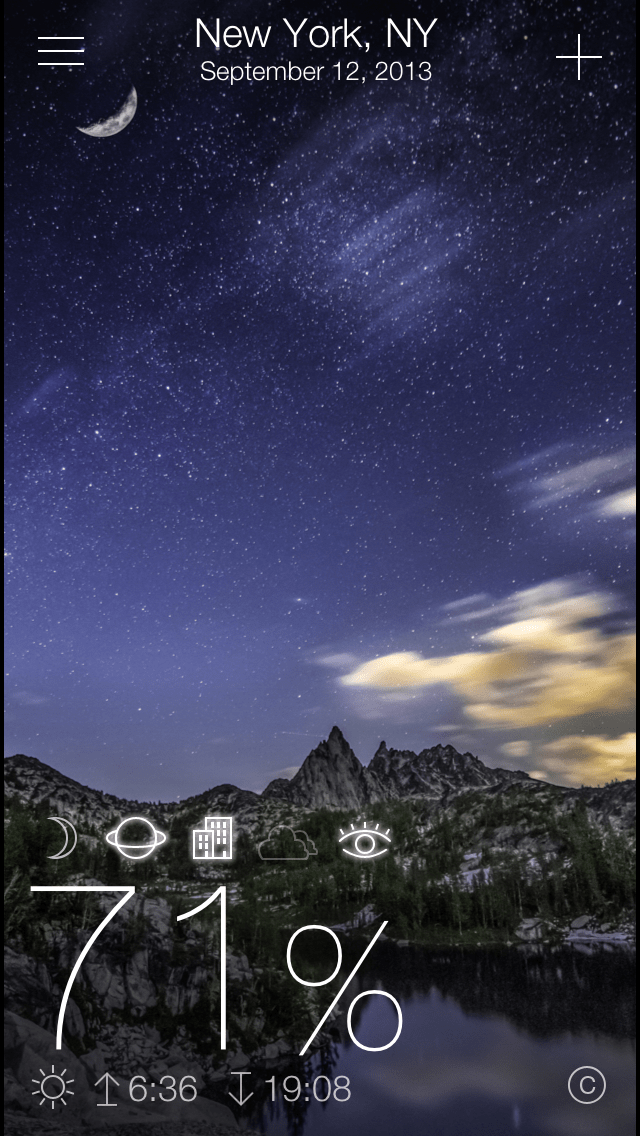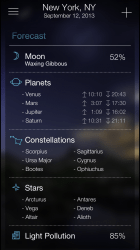A new app called “Sky Live” was just released from Vito Technologies and it will save you countless planning hours in your stargazing agendas. Vito Technologies, through a super-secret process, has discovered a way to give users a sky watching forecast anywhere in the world for up to 7 days in advance.
Were you planning a camping trip to watch the Perseid Meteor Shower? Is Venus going to be in the perfect spot in the sky to pull out your telescope and have a sky watching party? Sky watching is heavily dependant upon weather conditions and all that careful party planning is out the window when a bank of clouds settles in.
Universe Today and Vito Technologies is giving away 10 free copies of this app. How do you enter your name for this “appy” goodness?
In order to be entered into the giveaway drawing, just put your email address into the box at the bottom of this post (where it says “Enter the Giveaway”) before Monday, October 7, 2013. We’ll send you a confirmation email, so you’ll need to click that to be entered into the drawing.
More info on this app from the Publisher:
What it does: The main screen gives you one number: let’s say 78%.
Same as Fahrenheit degrees in weather, this percentage gives you at-a-glance info on how good tonight is for stargazing. The number is calculated with a special formula that takes into account things like is there anything interesting in the sky tonight, how cloudy, how bright is the Moon, etc.
Why it is different:
The formula for our Stargazing Index is superbly original and highly confidential. Combined with stunning space images, we hope this will be the most beautiful and accurate stargazing forecast on the AppStore.
Highlights:
– New app from the developers of Apple Design Award winning stargazing app with over 7 mln users
– Designed specifically for iOS7 (but will work on everything starting with iOS 5): blur and parallax, stunning graphics
– Detailed info on stargazing conditions for any location in the world for seven days ahead
– Moon phases
– Rise, set, culmination/azimuth for the most important objects: the Sun, the Moon, Mars, Venus, Jupiter, Saturn, and the International Space Station
– Cloudiness
– Weather forecast
– Light pollution
– The International Space Station position over the map
– ISS crew data


